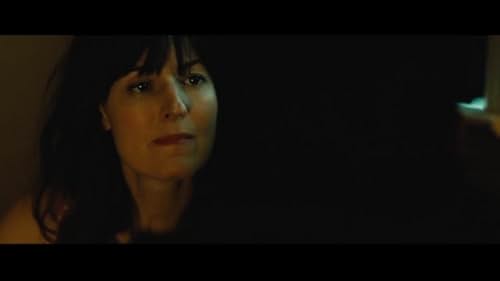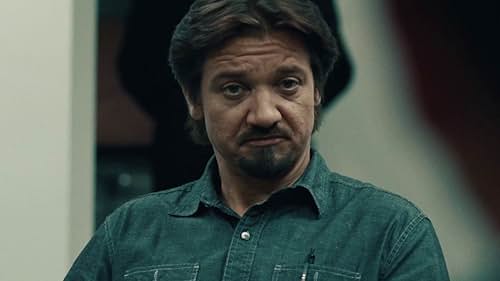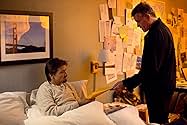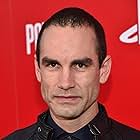Journalist Gary Webb, California 1996, started investigating CIA's role in the 1980s in getting crack cocaine to the black part of LA to get money and weapons to the Contra insurgents in Nic... Read allJournalist Gary Webb, California 1996, started investigating CIA's role in the 1980s in getting crack cocaine to the black part of LA to get money and weapons to the Contra insurgents in Nicaragua.Journalist Gary Webb, California 1996, started investigating CIA's role in the 1980s in getting crack cocaine to the black part of LA to get money and weapons to the Contra insurgents in Nicaragua.
- Awards
- 3 wins & 6 nominations
Joshua Close
- Rich Kline
- (as Josh Close)
Clay Edmund Kraski
- DEA Agent Jones
- (as Clay Kraski)
- Director
- Writers
- All cast & crew
- Production, box office & more at IMDbPro
Storyline
Did you know
- TriviaVarious members of the cast and crew have admitted to receiving government-level "push back" to the film, both during filming and in post-production.
- GoofsJerry Ceppos announces that Gary has been named the National Press Association's Journalist of the Year. There is no such thing as the National Press Association. He was named Journalist of the Year by the Bay Area Society of Professional Journalists. This is why he is speaking at the SPJ awards at the end of the film.
- Crazy creditsJust before the closing credits, there is a short video showing the real Gary Webb at home with his children.
- SoundtracksBring It On Home
Written by Tommy Girvin and Don Cromwell
Performed by Ransom
Courtesy of 474 Records and Music Supervisor Inc.
Featured review
I drove 140 miles, round trip, in foreboding weather, to attend the nearest U.S. opening.
It was well worth it.
First some context.
I've freelanced for decades, including during a war, successfully exposed major governmental corruption, weathered concerted retaliation and have been regularly appalled at the weakness of corporate, bureaucratic and political weasels who abandoned ideals, professionalism and integrity, "going along to get along." I was aware of Webb's writing and vilification at the time they occurred, in the late '90s, but for over 50 years I had a front row seat for even pre-Nixonian "drug wars" through the "crack epidemic," genocidal American imperialism, and the treatment of many other reporters who dared challenge the status quo, who had the courage to painfully examine the quaint and naive notion of collective national decency.
Webb's story, so artfully recounted and performed, was unfortunately true. He was accused of distorting the actuality of Reagan-era hypocrisy, but his reporting was accurate. He never accused the CIA of intentionally destroying the social fabric of minority communities, but made it clear that Harlem and Watts and Chicago's South Side were victims of "collateral damage," the inevitable consequences of the abandonment of any pretense of morality ostensibly possessed by the Reagan administration.
Indeed, spurred by new information about the practice of questionable property seizures, Webb had once again picked at the scab covering the decade-old, gangrenous infestation of our government, later well described by Robert Parry in his October 2004 Salon piece, "How Kerry exposed the Contra-cocaine scandal." To get the story, Webb had exposed himself to blood curdling danger, both at his own home in the U.S. and on the scene, in Central America.
Perhaps the worst betrayal of public trust by this film is depicted in recapitulation of the collective response of the New York Times, the Washington Post and the Los Angeles Times, after being pressured by the CIA and the State Department. The papers' responded with hyperactive involvement in the personal destruction of Webb's reporting, reputation and life. Previously. the same papers, pressured by Reagan administration officials, buried Senator John Kerry's investigation, and shared subsequent malfeasance in their facilitating the Bush/Cheney administration's illegal and genocidal invasion and occupation of Iraq.
The NY Times and Post had some odious history themselves. Reporters Ray Bonner and Alma Guillermoprieto were reassigned to boring beats after their courageous exposure of the incredibly savage El Mozote Massacre in El Salvador.
There, the U.S. trained, funded and armed Atlacatl Battalion murdered almost a thousand peasants, largely neutral evangelical Protestants, and mostly women and children, on December 11, 1981. Stanley Miesler's El Mozote Case Study, published in the Columbia Journalism Review, exhaustively documented their fates.
This film captured all those similar disgraceful elements. It needs to be seen by a wider audience just as it would be wise to make "Dr. Strangelove" part of a core curriculum in the formal education of American adolescents.
It was well worth it.
First some context.
I've freelanced for decades, including during a war, successfully exposed major governmental corruption, weathered concerted retaliation and have been regularly appalled at the weakness of corporate, bureaucratic and political weasels who abandoned ideals, professionalism and integrity, "going along to get along." I was aware of Webb's writing and vilification at the time they occurred, in the late '90s, but for over 50 years I had a front row seat for even pre-Nixonian "drug wars" through the "crack epidemic," genocidal American imperialism, and the treatment of many other reporters who dared challenge the status quo, who had the courage to painfully examine the quaint and naive notion of collective national decency.
Webb's story, so artfully recounted and performed, was unfortunately true. He was accused of distorting the actuality of Reagan-era hypocrisy, but his reporting was accurate. He never accused the CIA of intentionally destroying the social fabric of minority communities, but made it clear that Harlem and Watts and Chicago's South Side were victims of "collateral damage," the inevitable consequences of the abandonment of any pretense of morality ostensibly possessed by the Reagan administration.
Indeed, spurred by new information about the practice of questionable property seizures, Webb had once again picked at the scab covering the decade-old, gangrenous infestation of our government, later well described by Robert Parry in his October 2004 Salon piece, "How Kerry exposed the Contra-cocaine scandal." To get the story, Webb had exposed himself to blood curdling danger, both at his own home in the U.S. and on the scene, in Central America.
Perhaps the worst betrayal of public trust by this film is depicted in recapitulation of the collective response of the New York Times, the Washington Post and the Los Angeles Times, after being pressured by the CIA and the State Department. The papers' responded with hyperactive involvement in the personal destruction of Webb's reporting, reputation and life. Previously. the same papers, pressured by Reagan administration officials, buried Senator John Kerry's investigation, and shared subsequent malfeasance in their facilitating the Bush/Cheney administration's illegal and genocidal invasion and occupation of Iraq.
The NY Times and Post had some odious history themselves. Reporters Ray Bonner and Alma Guillermoprieto were reassigned to boring beats after their courageous exposure of the incredibly savage El Mozote Massacre in El Salvador.
There, the U.S. trained, funded and armed Atlacatl Battalion murdered almost a thousand peasants, largely neutral evangelical Protestants, and mostly women and children, on December 11, 1981. Stanley Miesler's El Mozote Case Study, published in the Columbia Journalism Review, exhaustively documented their fates.
This film captured all those similar disgraceful elements. It needs to be seen by a wider audience just as it would be wise to make "Dr. Strangelove" part of a core curriculum in the formal education of American adolescents.
- How long is Kill the Messenger?Powered by Alexa
Details
Box office
- Gross US & Canada
- $2,450,846
- Opening weekend US & Canada
- $941,809
- Oct 12, 2014
- Gross worldwide
- $5,218,973
- Runtime1 hour 52 minutes
- Color
- Sound mix
- Aspect ratio
- 2.35 : 1
Contribute to this page
Suggest an edit or add missing content




























